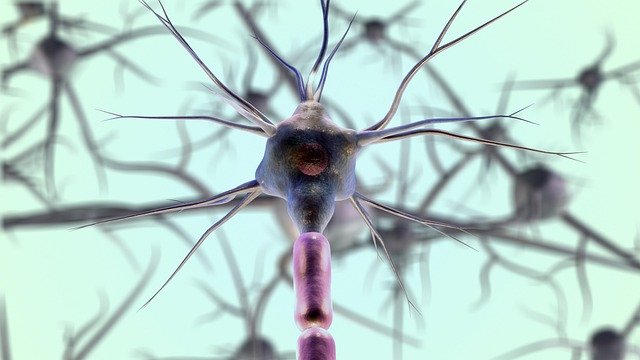Using a bionic limb is not just about the hand or leg itself. It’s about the brain.
The brain needs to learn how to send signals to the prosthetic. It needs to relearn how to move, grip, release, and feel in a completely new way. This process is called neuro-adaptation. And it depends heavily on how the training is done.
The truth is, many users don’t get the results they hoped for—not because of the technology, but because of small mistakes during training. These mistakes slow down brain learning. They create confusion. They stop progress.
The good news? These mistakes can be avoided. And when they are, training becomes smoother, faster, and far more effective.
At RoboBionics, we’ve spent years helping people across India use advanced bionic hands like Grippy™. We’ve seen what works, and what doesn’t. In this article, we’ll walk you through the most common training errors—and how to fix them—so you or someone you love can make the most of their bionic journey.
Mistake 1: Skipping the Brain
Bionic Hands Are Controlled by Thought, Not Just Muscle
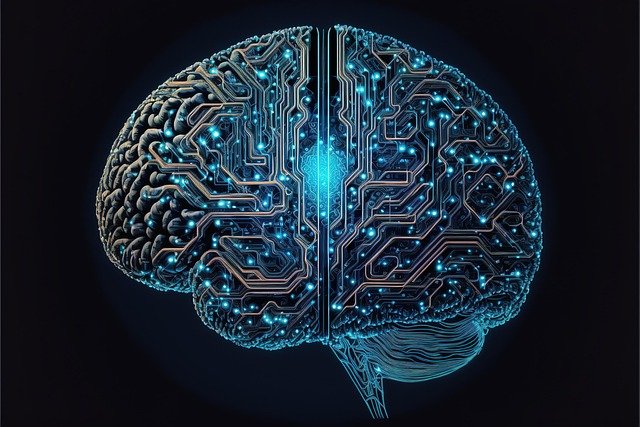
Many people think a bionic hand works like a machine—press a button, and it moves. But that’s not how modern bionic limbs like Grippy™ work. These devices read muscle signals that come from the brain.
That means the brain is doing the real work. The hand is just responding.
If users skip brain training, and only focus on the physical hand, they miss the most important part of learning. The brain needs time to understand the new signals. It needs to build new paths, just like it did when you first learned to write or ride a bicycle.
Training that doesn’t include focus, concentration, and mental effort delays this learning.
What to Do Instead
Start every training session by thinking about the movement first. Visualize your hand opening and closing. Try to “feel” the action in your mind.
This kind of mental focus helps the brain become more active. It prepares your nervous system. And it makes the signals that reach the muscles clearer and stronger.
Think first. Move second. This small shift can make a big difference.
Mistake 2: Practicing Without Purpose
Repetition Without Focus Wastes Time
It’s common to think that doing something over and over will lead to improvement. And while repetition is important, the quality of the repetition matters more than the quantity.
We’ve seen users move their bionic hand up and down 50 times without paying attention. But their control doesn’t improve. That’s because the brain isn’t involved. The body is moving, but the mind is distracted.
This creates “empty” practice—movements without learning.
What to Do Instead
Instead of rushing through movements, slow down. Focus on how you’re moving.
Try holding a cup. Feel the weight. Notice how much pressure your hand is using. Try releasing slowly. Think about the task.
When your mind is fully involved, even ten minutes of practice is more effective than an hour of mindless movement.
Make each action a lesson. That’s how the brain learns.
Mistake 3: Not Practicing Every Day
Gaps in Training Break the Brain’s Rhythm
The brain learns best through rhythm and repetition. If you train one day, then take a break for three, the brain doesn’t know what to keep.
It starts to forget. It disconnects from the new signals it was building.
We’ve seen patients who make great progress in a week, then pause their training for a few days. When they come back, they feel slower. The signals are weaker. They feel like they’re starting over.
This leads to frustration, and sometimes, giving up.
What to Do Instead
Keep it simple. Just 15 minutes a day is enough. But do it every day.
Treat training like brushing your teeth. It’s not a big task. It’s a habit. Something that fits into your day, no matter what else is happening.
Even on a busy or tired day, a few minutes of focused training keeps the brain sharp and connected to your prosthetic.
It’s the consistency that builds control—not the length of the session.
Mistake 4: Ignoring the Muscles
Weak Muscles Send Weak Signals
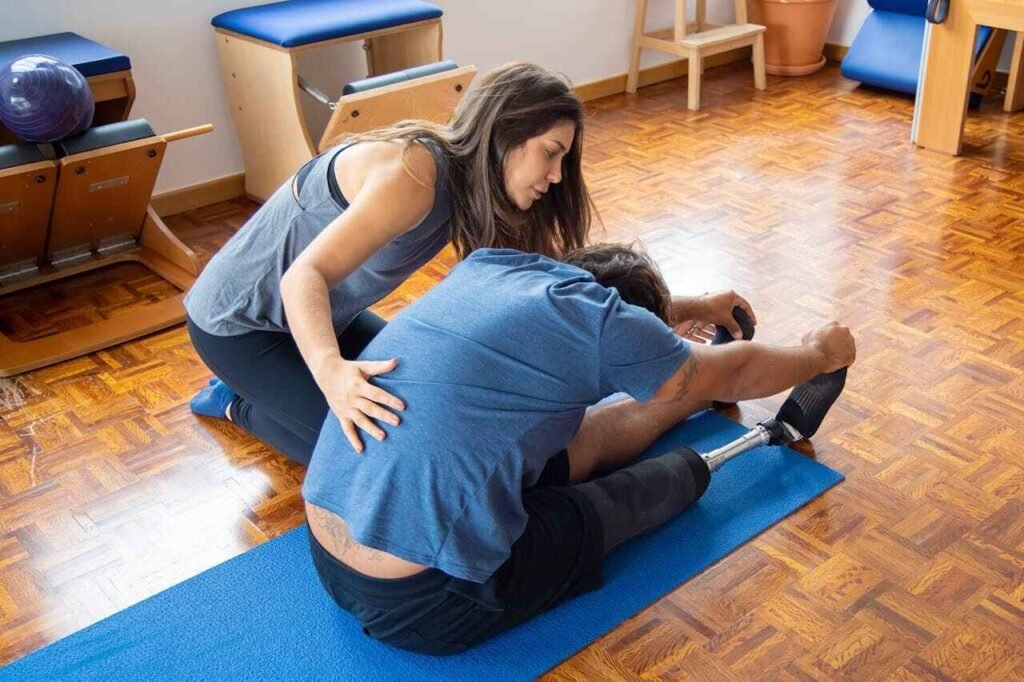
Your bionic hand reads signals from your muscles. But if those muscles are weak, the signals are faint. The hand doesn’t move properly. It may twitch or not respond at all.
This can feel like a problem with the prosthetic—but often, it’s just that the muscles haven’t been trained.
After an amputation, some muscles in the remaining limb become inactive. They haven’t been used in a while. Others may have lost strength due to surgery or lack of movement.
If this isn’t addressed, the learning process becomes harder than it needs to be.
What to Do Instead
Before even fitting the prosthetic, begin muscle activation.
This can be done by imagining finger movements and feeling for the contractions in the residual limb. Touch the skin and notice which areas tighten. Try squeezing an invisible ball. Try holding tension for five seconds, then relaxing.
As you practice these exercises, the muscles wake up. They send stronger signals. And when the bionic hand is attached, it responds better right away.
Strong muscles = clear control.
Mistake 5: Training in Isolation
Learning Alone Makes Progress Slower
Sometimes, users are fitted with their prosthetic, given a short demo, and sent home. They try to figure it out on their own. But without guidance, small mistakes go unnoticed. Bad habits form. Frustration builds.
The brain doesn’t know if it’s doing the right thing or not. It doesn’t get feedback. This slows down learning.
Also, when training is done alone, there’s less motivation. It’s easier to give up when no one’s watching or cheering you on.
What to Do Instead
Involve someone else in your training, especially in the early days.
It could be a family member, a therapist, a nurse, or even a friend. Let them observe, encourage, and offer feedback.
At RoboBionics, we recommend users return to their clinic regularly for short check-ins. We also offer video call support for remote users, so they’re never stuck.
Learning is faster when it’s shared. And success is sweeter when someone’s there to celebrate with you.
Mistake 6: Rushing Through the Basics
Jumping Ahead Leads to Frustration
Everyone wants to get back to normal life quickly. And that’s understandable. But trying to do complex tasks before the basics are strong can backfire.
We’ve seen users who want to tie shoelaces, cut vegetables, or type on a keyboard in the first week. But their grip control isn’t steady yet. Their release is not smooth.
They end up dropping things, getting frustrated, and feeling defeated.
This doesn’t mean they’re failing. It just means they skipped a step.
What to Do Instead
Start with simple tasks. Practice opening and closing the hand slowly. Practice picking up soft objects, then harder ones. Practice holding something without squeezing too tight.
Only when these movements feel smooth should you move on to more detailed tasks.
Think of it like learning to write. First, you learn to hold the pencil. Then you draw shapes. Then letters. Then words.
The basics build the base. Don’t rush them.
Mistake 7: Ignoring Phantom Sensations
Phantom Limb Sensations Are Normal—and Useful
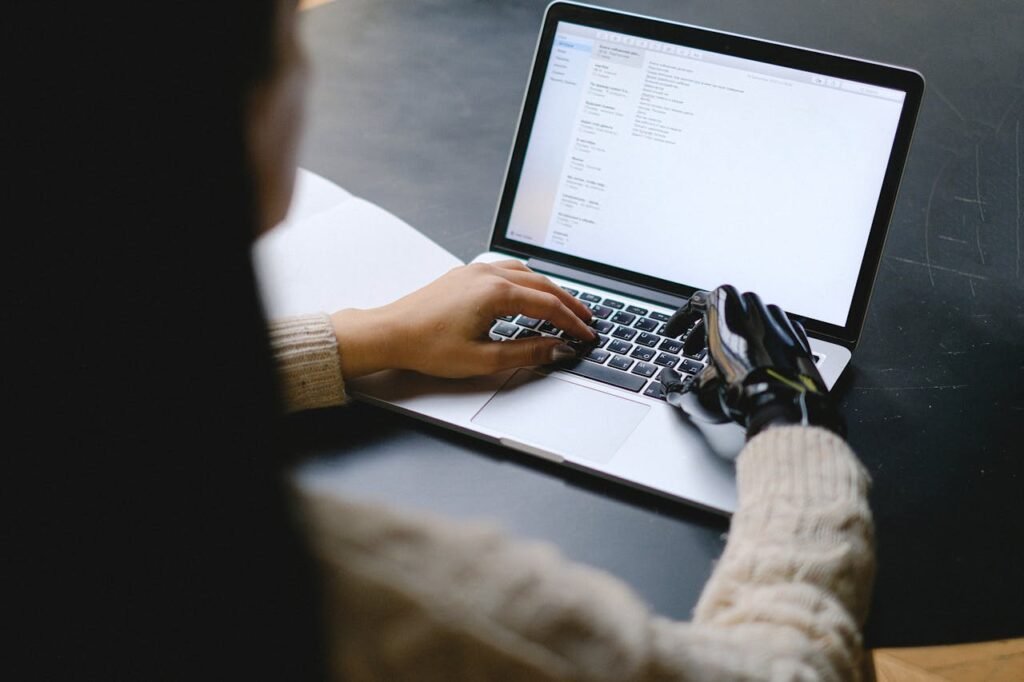
After an amputation, many people feel that their missing hand is still there. They feel it move, itch, or cramp. This is called phantom limb sensation. It’s common. And while it can be uncomfortable, it’s actually a sign that the brain still remembers the limb.
This memory can be used during training. But often, people try to ignore or suppress these sensations. They feel strange or scary.
By doing so, they miss a powerful tool.
What to Do Instead
Use mirror therapy or guided imagery to connect with the phantom hand.
Place a mirror next to your good hand, so it looks like the missing one is moving. Move both hands together. Let your brain believe both sides are working.
This helps rewire the brain and makes it easier to send signals to the muscles that control the bionic hand.
Instead of fearing phantom sensations, turn them into your training partner.
Mistake 8: Letting Emotions Control the Session
Training While Frustrated or Tired Slows Learning
Emotions have a strong effect on how well the brain learns. When a person feels calm and focused, the brain is open. It listens. It adjusts. But when a person is frustrated, angry, or overwhelmed, the brain closes off.
We’ve seen users try to force progress during a bad mood. They repeat movements with tension in their body. They clench their jaw. They breathe fast. The hand doesn’t respond well, and that only adds to the frustration.
This loop stops learning. It creates stress in the body and confusion in the brain.
What to Do Instead
Pick a time of day when you feel mentally relaxed. It might be after a walk, after breakfast, or before bedtime. Start with slow breathing. Set a short, realistic goal for the session.
If the hand doesn’t respond well, don’t push harder. Stop. Stretch. Try again slowly. Or take a break.
Even a short, peaceful session teaches more than a long, tense one.
The brain learns best in a calm space. Give yourself that space.
Mistake 9: Not Personalizing the Training
One-Size-Fits-All Doesn’t Work for Everyone
Some patients follow generic routines they’ve seen online or been given at a camp. These routines might include squeezing a ball ten times, picking up a cup, or pressing buttons.
But if the routine doesn’t connect with the person’s actual lifestyle, the brain doesn’t see the value. The user may go through the motions without real interest.
Also, each person’s body, amputation level, and daily habits are different. What works for one user may not work for another.
What to Do Instead
Make the training fit you.
If you’re a student, practice holding a pen or flipping a notebook. If you work in the kitchen, practice picking up utensils. If you play with your child, practice gentle grip and release.
When the training matches your real life, your brain pays more attention. It sees purpose. And when something feels useful, the brain learns faster.
Talk to your therapist or trainer about your daily needs. Build a plan around them.
Mistake 10: Forgetting to Involve the Other Hand
One Hand Trains the Other

The brain has a natural ability to mirror movement. When one hand moves, the other side of the brain watches and learns.
This is why mirror therapy works. And it’s also why practicing with the non-affected hand can help the affected side.
But many users forget to involve their natural hand. They train only with the bionic side. They don’t use both together.
This can slow learning and limit control.
What to Do Instead
Do tasks that use both hands—like folding clothes, opening a jar, or pouring water. Let the natural hand “teach” the brain how the action should feel.
Also, practice moving both hands in sync. Even if the bionic side is slower, keep trying. This builds coordination and confidence.
The more your brain sees the two sides working together, the faster it adapts.
Mistake 11: Sticking With One Task Too Long
Repeating the Same Action Can Create a Plateau
In the beginning, repeating one action—like opening and closing the hand—is helpful. But if that’s all you do for weeks, the brain stops learning. It gets bored.
We’ve seen users get stuck doing only one or two exercises. They become very good at those movements, but struggle with new tasks. Their progress slows. Their confidence drops.
This happens when the brain isn’t being challenged.
What to Do Instead
Once a basic movement feels easy, change the task slightly. Add a twist. Try using different objects. Try moving faster or slower. Try using the prosthetic in a full activity, like eating or getting dressed.
Keep the training fresh. Keep the brain curious.
That’s how learning stays alive.
Mistake 12: Neglecting Rest and Recovery
Tired Muscles and Minds Can’t Learn Well
Some users believe that more training is always better. They practice for hours, hoping to speed up results. But they end up overusing the muscles. Their hand feels heavy. Their control becomes shaky. Their mind becomes tired.
When this happens, the quality of the signals drops. Mistakes increase. And the brain starts learning the wrong patterns.
Rest is not laziness. It’s part of growth.
What to Do Instead
Balance effort with rest. If you train for 15 minutes, take a 5-minute break. If your muscles feel sore, let them recover for a day.
Also, get enough sleep. The brain does most of its memory building while you rest. If you sleep poorly, your control the next day might feel off.
Training is like planting seeds. The practice is the watering. But rest is the sunlight.
You need both to grow.
Mistake 13: Focusing Only on the Hand, Not the Arm
Control Starts Higher Than You Think
Many people assume the movement starts at the wrist. But in bionic limbs, especially myoelectric ones, the signal often comes from the upper forearm or even the elbow.
If the arm isn’t positioned well, or if it’s too stiff, the signal path becomes blocked or confused. This reduces control and responsiveness.
Users who ignore their shoulder, elbow, and full-arm movement often have jerky or delayed responses.
What to Do Instead
Pay attention to your whole arm during training. Keep the shoulder relaxed. Let the elbow bend naturally. Don’t keep the arm frozen.
Do warm-up stretches for the entire arm. Let the movement flow from the shoulder to the hand. This creates a smooth channel for signals.
Think of it like a river. If the top is blocked, the water can’t reach the bottom.
Mistake 14: Treating the Prosthetic Like a Gadget, Not a Body Part
Emotional Connection Affects Physical Performance
Some users think of the prosthetic as a tool or gadget—like a phone or a remote. They use it when needed but never fully accept it as part of their body.
This distance, even if it’s mental, can slow down brain learning. The brain struggles to build deep connections with something it feels is “separate.”
On the other hand, users who see the prosthetic as part of them tend to learn faster. They engage with it more. They respect the learning process.
What to Do Instead
Start treating the bionic hand like it’s truly yours. Talk about it that way. Use it as often as you can—not just during training, but in everyday life.
Give it a name if that helps. Personalize it. The more emotionally connected you feel to it, the faster your brain will adapt.
Identity and control go hand in hand. When the brain believes the hand is yours, it trains harder to make it work.
Mistake 15: Relying Only on Visual Feedback
Looking Too Much Limits Sensory Trust
In the early days, many users stare at their bionic hand while practicing. This is normal. They want to make sure it’s doing the right thing.
But over time, if they rely only on sight, they don’t develop the deeper connection needed for smooth control. The brain needs to “feel” the movement—not just see it.
Excessive watching can make users anxious. It can make them doubt their control. And it limits the sensory development that’s key for long-term use.
What to Do Instead
Start by using a mirror or looking directly, but gradually reduce this. Try doing tasks without looking—like holding a soft ball behind your back or feeling for a spoon in a drawer.
Let your brain listen to the sensation of movement—pressure, vibration, timing—not just the image.
Grippy™ helps here with our Sense of Touch™ technology. It gives vibration-based feedback, which helps users train without relying only on their eyes.
Use your senses together. That’s how the brain learns faster and more deeply.
Mistake 16: Forgetting to Reflect on Progress
Training Without Review Slows Improvement
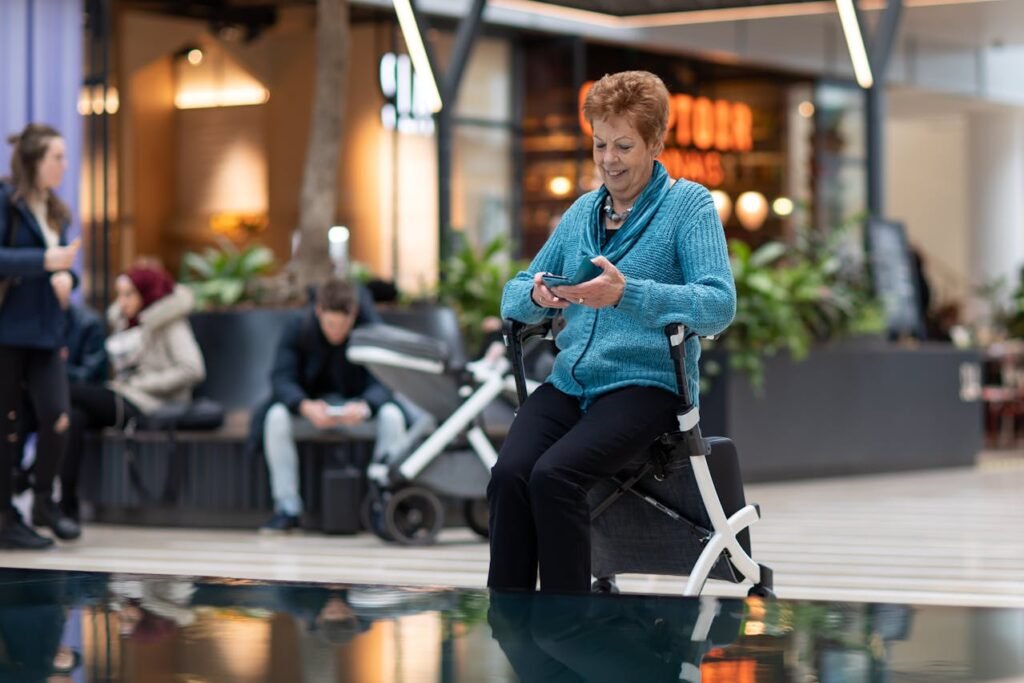
Users often get stuck in a loop of doing exercises but not reflecting on how they’re doing. They forget what worked well last week. They don’t notice small improvements. They miss chances to fine-tune their approach.
Without reflection, mistakes repeat. Good habits don’t get reinforced.
It’s like walking in a straight line without checking if you’re still on the path.
What to Do Instead
Spend two minutes at the end of each training session thinking about what went well. Write it down. Or record a short video of yourself doing a task.
Also, note what didn’t go as planned—and why. This helps you adjust your next session.
Over time, you’ll see clear progress. You’ll feel more in control. And your training will become smarter and more personalized.
The brain loves feedback. Give it clear signals—not just during training, but after it too.
Mistake 17: Not Asking for Help Soon Enough
Waiting Too Long Can Waste Precious Learning Time
Sometimes, users face small issues—like a weak grip, a slow response, or poor socket fit. But they don’t speak up. They assume it’s normal. Or they worry about bothering the clinic.
Weeks pass. They continue training the wrong way. And the brain learns poor habits that are harder to fix later.
We’ve seen users finally ask for help after months of struggle, only to realize a tiny adjustment could have solved the issue much earlier.
What to Do Instead
If something feels off—say so. Whether it’s physical discomfort or a movement that doesn’t feel right, ask your prosthetist or trainer.
At RoboBionics, we encourage constant feedback. We’d rather hear too often than too late.
Asking for help isn’t weakness. It’s wisdom. It keeps your progress smooth and saves time and energy.
Mistake 18: Thinking Results Should Look the Same for Everyone
Comparing Slows Confidence
It’s natural to look at others and wonder why their grip is faster, or their fingers move more smoothly. But comparison creates pressure. And pressure slows learning.
Every user’s journey is different. Their muscle condition, brain response, emotional state, and training time all vary.
Trying to match someone else’s progress usually leads to frustration and self-doubt.
What to Do Instead
Focus only on your own improvement. Compare your control today to how it felt last week. Track your small wins. Give yourself credit.
The brain learns best when it feels safe, supported, and encouraged.
You’re not competing. You’re recovering. And recovery is deeply personal.
Mistake 19: Not Making the Bionic Hand a Part of Daily Life
Practice That Stays Inside the Clinic Doesn’t Stick
Some users train well in therapy sessions but never use their prosthetic outside. It stays in a drawer. It only comes out during rehab.
The brain treats this like a part-time tool—not a full-time body part.
Without everyday use, those new pathways in the brain stay weak. They don’t become habits. And control remains limited.
What to Do Instead
Wear your prosthetic as much as possible. Use it to carry bags. Use it while reading, walking, watching TV. Use it in safe, simple ways throughout your day.
The more your hand is part of your real life, the faster your brain will treat it as your own.
Neuroplasticity works through experience. Give your brain more of it.
Mistake 20: Believing That Progress Is All or Nothing
A Slow Day Doesn’t Mean Failure

Many users expect progress to be steady every day. So when they have an off day—when the hand doesn’t respond, or a task feels harder—they think they’ve gone backward.
This belief can be harmful. It creates stress. It makes users feel like they’re failing. And it can lead to skipping training altogether.
But brain learning is not a straight line. Some days will be great. Others will feel slow. That’s normal.
What to Do Instead
Accept that ups and downs are part of the process. Don’t judge one bad day. Look at the whole week, the whole month.
If you miss a session or have a difficult time with a task, start fresh the next day. The brain remembers. It’s always adapting.
Staying consistent matters more than being perfect. Keep going—even when it’s slow.
Progress builds quietly, step by step.
Final Thoughts: Learning to Move Again Starts with Learning to Learn
Using a bionic limb is more than physical. It’s mental. Emotional. Personal. It’s about training your brain to speak a new language—and teaching your muscles to respond.
The mistakes we’ve shared in this article are not failures. They’re common. They happen to many users. And every one of them can be fixed.
At RoboBionics, we believe every person has the power to succeed with their bionic limb. But that success depends on awareness, patience, and the right approach.
We’ve seen users go from doubt to mastery, from hesitation to confidence. Not because they were lucky—but because they trained with purpose. They took their time. They asked for help. And they kept going.
What You Can Do Now
If you or someone you care about is using a bionic limb—or planning to—take a moment to reflect.
Are you practicing with purpose?
Are you giving your brain space to learn?
Are you asking for support when you need it?
And if not, that’s okay. Today is a good day to start.
You don’t need perfect training. You just need consistent, mindful effort.
And if you ever feel stuck, we’re here to help.
Reach out to our team, schedule a free training demo, or get personalized guidance at robobionics.in/bookdemo
Together, we’ll make your journey smoother, smarter, and more empowering.
Because every hand deserves to move. And every user deserves to thrive.



